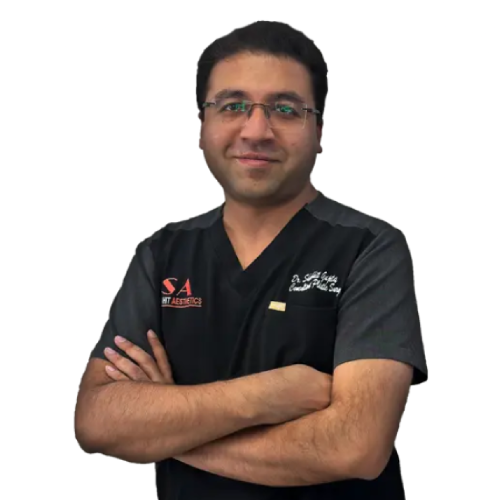
Let's talk about medical aesthetics and rebuilding processes. People often mix up "cosmetic surgery" and "plastic surgery." But they are unique. Both focus on different things with separate goals. Knowing these differences is key. This is true for anybody thinking about surgery. It could be for a beauty boost or reconstruction.
The Fundamental Difference: Purpose and Outcome
Cosmetic Surgery: Enhancing Appearance
Imagine cosmetic surgery as an art form, focusing on enhancing how someone looks. Its goal is to boost beauty, balance, and proportion. Unlike life-saving surgery, cosmetic surgery is a personal choice, not a medical need. People choose it to upgrade how they look. From top to toe, no area is off-limits.
Plastic Surgery: Restoring Function and Form
Primarily, plastic surgery is about reconstruction. Its mission? To fix imperfections, repair body functions, and enhance how body parts look after injury, in-born flaws, illnesses, or other circumstances. Frequently, it isn't a matter of choice. It's a need to mend serious functional mishaps or major distortion in appearance.
Cosmetic Surgery vs. Plastic Surgery: Detailed Comparison
When you're weighing cosmetic versus plastic surgery, know each can boost looks, but their main aims are unique.
Cosmetic Surgery:
Objective: The main goal is to enhance appearance.
Areas Treated: Your head, neck, and body are parts where it's done.
Elective Nature: Usually, it depends on what you want.
Outcome: It's all about making your look better, like getting the right shape and balance.
Examples of Procedures:
Enhancing Breasts (Breast Augmentation): Aims to better breast size and shape.
Resculpting the Nose (Rhinoplasty): Modifies nose shape for aesthetic appeal and sometimes aids in breathing.
Liposuction: Speedily eliminates unwanted body fat, refining one's form.
Skin Tightening (Facelift): Also known as Rhytidectomy, this procedure irons out wrinkles and loose skin, bestowing a youthful visage.
Firming up the Tummy (Tummy Tuck): Officially Abdominoplasty, this trims excess skin and fat around the belly and strengthens core muscles.
Plastic Surgery:
Objective: It's mainly about rebuilding to regain function and visuals.
Areas Treated: It works on body parts hit by trauma, born defects, or sickness.
Elective Nature: Often not elective; necessary for functional and reconstructive purposes.
Outcome: Focuses on correcting deformities and restoring normal function and appearance.
Examples of Procedures:
Breast Reconstruction: It brings back the look of the breast following a mastectomy from breast cancer.
Cleft Lip and Palate Repair: It fixes inborn defects and enhances how they works and looks.
Burn Repair Surgery: It gives a better look and function to parts damaged by intense burns.
Hand Surgery: It handles wounds or inborn defects of the hand, upgrading its function and look.
Scar Revision Surgery: It lessens the visibility of scars left from injuries or past surgeries.
Training and Expertise: How Cosmetic and Plastic Surgeons Differ
While both cosmetic and plastic surgeons are well-schooled experts, their schooling journeys and concentration areas are distinctive.
Training for Cosmetic Surgeons:
Usually, plastic surgeons attend medical school. This is followed by specialized medical training in fields like general surgery, head and neck surgery, dermatology, or something similar. They then receive more focused training in cosmetic techniques. They could pick up these skills through things like special fellowships, workshops, or real experience. Often, after finishing this detailed education, they seek an official recognition or certification from the American Board of Cosmetic Surgery (ABCS).
Training for Plastic Surgeons:
Plastic surgeons go through intense, detailed training. Post med school, they start residency in plastic surgery; learning both cosmetic and reconstructive methods. This residency involves years of learning to restore body parts' form and function. Sometimes, plastic surgeons take extra courses to learn even more about certain parts of reconstructive surgery. The American Board of Plastic Surgery certifies them, confirming their top-tier training and skill level.
Why Board Certification Matters
Picking a surgeon for cosmetic or plastic surgery? Look for board certification. Why? It's a guarantee. The surgeon has trained a lot, taken tough tests, and follows strong rules for looking after patients.
For Cosmetic Surgeons:
When a surgeon holds certification from the American Board of Cosmetic Surgery (ABCS), it signals their extensive education in beauty procedures. They've also shown their skill in aesthetic surgery.
For Plastic Surgeons:
If a surgeon has a certificate from the American Board of Plastic Surgery (ABPS), this shows they're skilled in reconstructive and cosmetic surgery. It illustrates their understanding of surgery techniques and patient care. Choosing a board-certified surgeon is crucial to secure the patient's safety and desired results. This certification instills trust, guaranteeing that the surgeon possesses the essential skill and experience for a positive operation.
Cosmetic Surgery vs. Plastic Surgery: Understanding the Overlap
Despite the clear differences in aims and education between plastic and cosmetic surgery, the lines often blur. Several plastic surgeons carry out procedures typically labeled as cosmetic. Certain surgeries like nose jobs or breast enhancements could be classed as either; it depends on the aim.
Examples of Overlapping Procedures:
Breast Augmentation and Reconstruction: Breast augmentation is not just cosmetic. Sometimes, women need it after a mastectomy.
Rhinoplasty: Rhinoplasty isn't only about looks. It can fix breathing problems too.
Blepharoplasty (Eyelid Surgery): Blepharoplasty has dual roles. It can take years off your face or help droopy eyelids see clearly again.
Shared Goals:
Cosmetic and plastic surgeries both target bettering someone's life quality. They boost looks or brings back normal functions, supporting people to gain confidence and ease with their bodies.
Making the Right Choice: Cosmetic or Plastic Surgery?
Let's think about choosing between cosmetic and plastic surgery. You've got to think about what you truly want and need. Hoping to boost your looks and highlight certain traits? Cosmetic surgery could be your answer. Need to fix something that's not working right? Maybe you need to recover your shape after an accident or illness. In these cases, plastic surgery could be the way to go.
Both cosmetic and plastic surgery can change lives, but in different ways. It's vital to know what makes them distinct when thinking of surgery. Cosmetic surgery makes looks better, while plastic surgery fixes functions and rights wrongs. They both need expert training, and picking an authorized surgeon gives the best care and safety.
At Shobhit Aesthetics, we provide a selection of beauty and restorative treatments designed just for you. Looking for a confidence boost with an aesthetic touch-up? Or medical reconstruction surgery? Let's reach your objectives together.


